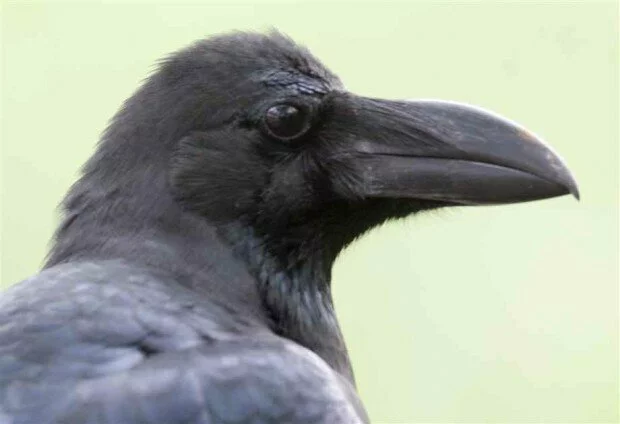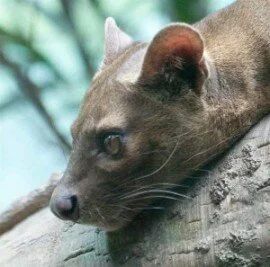The Wolves of Yellowstone: A Great Ecological History
Yellowstone National Park is among the most beautiful and fascinating of national parks in the world, as well as the first to ever be established. With its great collection of ecosystems and memorable geothermal features such as its geysers, the national park attracts a great number of tourists every year. However, Yellowstone possesses a history of ecological struggles stemming from the extermination of one of its vital species, the majestic gray wolf. The gray wolf is an incredible hunter with a significant role in its habitat. The removal of this important predator resulted in an ecological imbalance which threatened to destroy the park’s natural system, and a great struggle to maintain the health of the environment took place until the realization that the key to the park’s survival would be the very creature that the federal government endeavored to wipe out in the first place.
The gray wolf (Canis lupus) is a beautiful animal which is distinguished from dogs by its long, powerful muzzle, yellow eyes, more elongated legs, bigger paws, and larger teeth. A two-layered coat provides it with greater protection against low temperatures.[1] These wolves are very intelligent and emotional, forming close bonds in their packs which are strengthened as they play and hunt together. These packs can range from five to about nine animals, and are led by an alpha pair which is treated with great respect by the other wolves. The lowest ranking member is known as the omega, and is usually treated with the least amount of respect. Their intelligence is best observed when they hunt, as they will usually study and observe a herd of animals before engaging in a hunt. The wolves try to pick out a young, old, or weakened animal that they can safely and quickly take down. Once they make a choice, the wolves close in quietly. Once they are close enough, they begin the hunt by attempting to scatter the herd. This usually exposes the weaker animal, which is unable to keep up with the other herd members.[2] The wolves may slash at the hind leg tendons of their target in order to disable it, or herd it back toward waiting pack members in order to trap the animal and overpower it more easily. The combination of intelligence, cooperation, and power makes the gray wolf an incredibly effective predator. They prey on a wide variety of species, from small animals like beavers and rabbits to much larger creatures such as elk and bison. This makes the gray wolf a keystone predator, an animal that dramatically affects its environment by keeping the population numbers of other species under control.[3]
Throughout Yellowstone National Park’s early years, no legal protection for the park’s wildlife was established and administrators, poachers, and tourists were basically free to shoot any game animal or predator they wished. Unsurprisingly, the park’s ecosystem slowly began to suffer from this careless treatment. The gray wolf population was especially stressed by this unrestricted hunting as they were generally an undesired species due to safety reasons. Much to the detriment of the wolves, the tragic and regardless killing continued and their populations began to dwindle. In 1883, regulations forbidding the hunting of most park animals were finally passed, yet these regulations did not apply to predators such as the wolves.[4] It seemed as if the wolves were slowly being pushed to the edge of extinction, and it eventually became clear that the Yellowstone wolves were, in fact, being driven to this end. 1907 saw an event that would deal another sizable blow to the remaining wolf population in the form of a program named the Animal Damage Control, which was the result of pressure from the western cattle and livestock industries. This program led to the killing of nearly 2000 wolves, further crippling the already damaged population numbers. Nearly a decade later, the National Park Service was created. With a legislation that made it possible for the destruction of potentially dangerous species to continue, the creation of the Service only added more to the reduction of the gray wolves.[5] The continuous hunting eventually led to the killing of Yellowstone’s last wolves, and the species was wiped out from the range.
Despite the success of the predator control actions, it would soon become clear that the decision to kill off the gray wolves would threaten the park’s entire ecosystem. Shortly after the eradication of the wolves, a new and unexpected problem began to rise. An unlikely species would nearly become the death of Yellowstone’s environment; the elk (Cervus elaphus). The elk is Yellowstone’s most abundant large mammal and paleontological evidence has confirmed their continuous presence in the area for around 1,000 years.[6] Throughout that long stretch of time, the population of these creatures was controlled by the wolves. However, with the wolves now gone, the elk were able to multiply with little to no restrictions. Smaller carnivores like the coyote (Canis latrans) preferred hunting smaller prey and the omnivorous grizzly bears (Ursus arctos horribilus) and black bears (Ursus americanus) never hunted elk as frequently as the wolves did. The number of elk eventually grew out of control. The extreme populations became stressful for the environment as the elk overgrazed and several different species of plants, such as aspen, became much less abundant. The lack of aspen trees, in turn, began to hurt the local beaver population which relied on that particular plant species as a primary food source.[7] The spread of disease was also commonly hindered by wolves which hunted sickly prey. However, with the absence of the predators, the prevalence of disease was strengthened.[8] The Yellowstone coyotes, now facing less competition in the absence of wolves, also multiplied beyond control and reduced the number of small rodents present in the park. This reduction of small prey would soon begin to adversely affect the Park’s number of foxes, hawks, and eagles.[9] The result was an ecological nightmare which became possible due to the removal of just one vital species. It was the increase in elk numbers which caused the greatest changes in Yellowstone’s ecosystem, and they would quickly become the priority when the time came to protect Yellowstone’s environment.[10]
Faced with this unexpected dilemma, the park officials decided to manage the gluttonous elk populations in a variety of different ways. Many elk were captured and shipped to other areas while others were simply killed by park rangers. Furthermore, the number of elk outside of the Park that hunters were allowed to hunt was increased. Although effective in preventing the further deterioration of the environment, this eradication of elk did not improve conditions in Yellowstone. After thirty years of this management style, the elk began to near a local extinction. The plummeting elk numbers angered both conservationists and hunters, and the park service eventually had to put an end to the killing. Once again without a common threat, the elk population eventually rebounded, this time with population numbers higher than ever before.[11]
Yellowstone did not remain entirely without wolves for very long. Traveling wolves originating from Canada would occasionally make their way into Yellowstone, although these small numbers were not sufficient for the re-establishment of an effective population. However, things were about to change. The Endangered Species Act of 1973 became an aid for the wolves as it provided laws and regulations which concerned the protection of many endangered species (the gray wolf being among the listed species). It became clear that the best way to repopulate the wolves would be to introduce them back into Yellowstone. Thus, there was finally hope for the futures of both the wolves and Yellowstone National Park. A report released in 1980 effectively started a series of debates, town meetings, editorial commentary, media coverage, legal maneuvering, political posturing, backroom dealing, and even acts of Congress which became known as the Wolf Wars. These struggles would continue for fifteen years as the effects of releasing wolves back into Yellowstone were considered.[12]
Despite the continuing debates, the decision was made to reintroduce wolves back into Yellowstone. In January of 1995, fourteen wolves were captured the Rocky Mountains of western Alberta and brought to Yellowstone National Park. A process of acclimation then began where the wolves were acquainted with the local diet, sounds, and smells in order to prepare them for survival in their new environment. The acclimation enclosures were close to an acre in size and were all located in or near the Lamar Valley in the northeastern area of the Park. These were the Rose Creek, Crystal Creek Bench, and Soda Butte enclosures. In March of the same year, the wolves were released into the Park. Seventeen additional wolves were released into Yellowstone, and the future of the new Yellowstone wolf population was left to nature.[13]
This reintroduction is considered one of the most successful wildlife projects in U.S. history. The new wolf population managed to reduce the number of elk and coyotes present in Yellowstone National Park, and the ecosystem began to improve. Despite the once terrible reputation of the wolves, they are now popular tourist attractions. However, there are some controversies about the effects the wolves are currently having on the wildlife. The average number of elk preyed on by wolves has exceeded expectations, resulting in concern for the future of the elk. The presence of wolves has also forced the elk into less favorable habitats which cannot sustain the herbivores as well as their original feeding grounds, resulting in heightened stress, worse nutrition, and even lower birth rates.[14] Despite these effects, many still consider the reintroduction of the gray wolf the greatest decision that could have been made for Yellowstone National Park’s ecosystem. Finally, the gray wolf was back.
The history of wolves in Yellowstone is an important example of how necessary an understanding of ecology is for the protection of our surroundings. The simple removal of one species led to a disaster that nearly destroyed the ecosystem of one of the most beautiful national parks in the world. A greater understanding of ecology is necessary for the proper treatment of our environment. Without this understanding and knowledge, other grave mistakes such as the Yellowstone gray wolf eradication will take place. Fortunately in the case of Yellowstone, the correct decisions were made in order to ensure the survival of the ecosystem, as well as the flourishing of a once misunderstood creature designed for an important purpose.
[1] “Gray Wolf (Canis lupus).” PBS.org. Available from http://www.pbs.org/wnet/nature/animal-guides/animal-guide-gray-wolf/476/. Internet; accessed 6 May 2011.
[2] “The Wolf Pack.” WolfCountry.net. Available from http://www.wolfcountry.net/information/WolfPack.html. Internet; accessed 6 May 2011.
[3] “Gray Wolf (Canis lupus).” PBS.org. Available from http://www.pbs.org/wnet/nature/animal-guides/animal-guide-gray-wolf/476/. Internet; accessed 6 May 2011.
[4] Haines, Aubrey L. (1996). The Yellowstone Story—A History of Our First National Park.. II. Niwot, CO: University Press of Colorado. pp. 80–82
[5] Chase, Alton (1986). “The Wolf Mystery”. Playing God in Yellowstone—The Destruction of America’s First National Park. Boston, MA: The Atlantic Monthly Press. pp. 120–125.
[6] “Yellowstone Elk.” nps.gov. Available from http://www.nps.gov/yell/naturescience/elk.htm. Internet; accessed 7 May 2011.
[7] “Wolves in Yellowstone: A Short History.” yellowstoneinsider.com. Available from http://www.yellowstoneinsider.com/issues/wolves/wolves-in-yellowstone-a-short-history.php. Internet; accessed 7 May 2011.
[8] Bishop, Norman A.. “What Good Are Wolves?.” (2011): newwest.net. 04 Jan 2011.
[9] “Wolves in Yellowstone: A Short History.” yellowstoneinsider.com. Available from http://www.yellowstoneinsider.com/issues/wolves/wolves-in-yellowstone-a-short-history.php. Internet; accessed 7 May 2011.
[10] Stolzenburg, William (2008). Where the Wild Things Were. Jeffers Literary Press.
[11] “Wolves in Yellowstone: A Short History.” yellowstoneinsider.com. Available from http://www.yellowstoneinsider.com/issues/wolves/wolves-in-yellowstone-a-short-history.php. Internet; accessed 7 May 2011.
[12] Ibid
[13] Maughan, Ralph. “History and current status of the Greater Yellowstone wolf restoration .” forwolves.org. Available from http://www.forwolves.org/ralph/wpages/yell-o.htm. Internet; accessed 8 May 2011.
[14] Ellig, Tracy (July 15, 2009). “Greater Yellowstone elk suffer worse nutrition and lower birth rates due to wolves”. Montana State University News Service.

